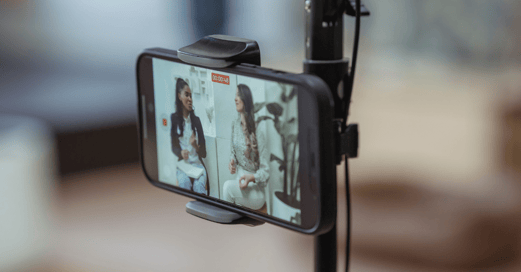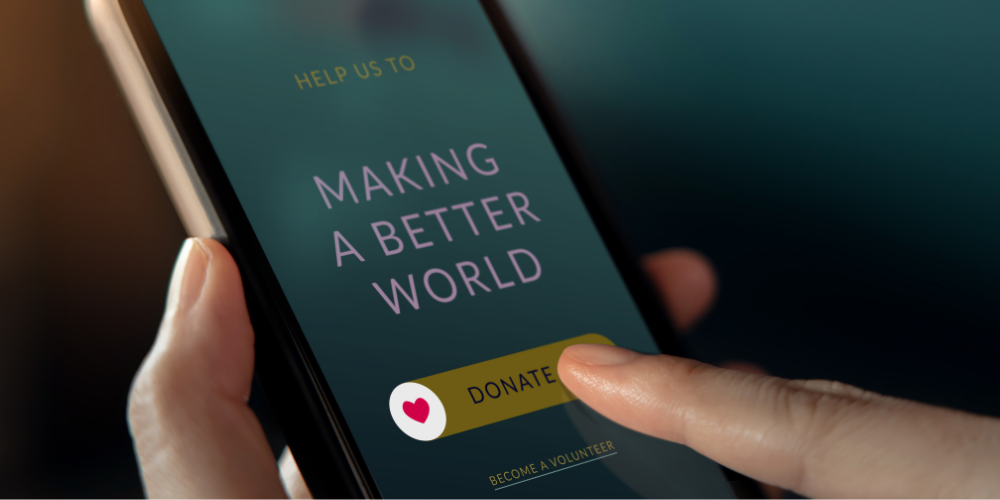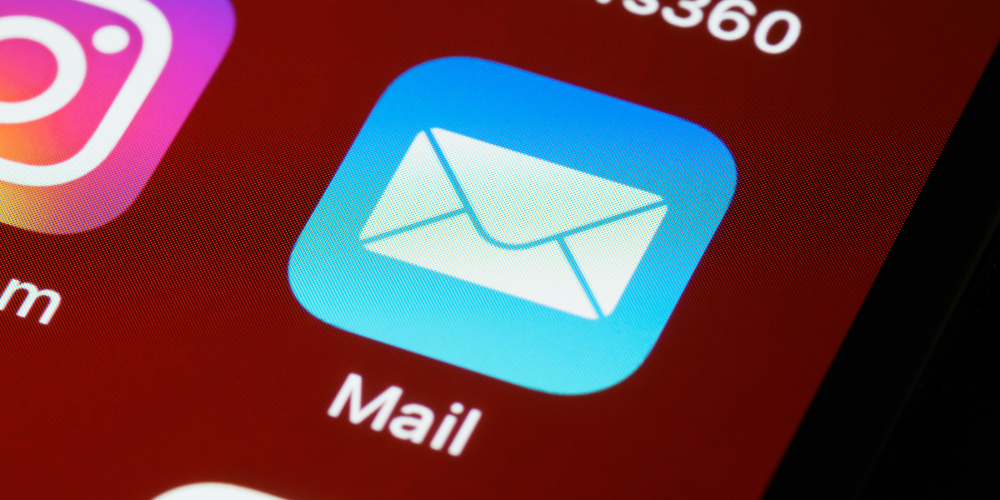
11 Nonprofit Marketing Trends (2023 Edition)
The Greek philosopher, Heraclitus, wrote, “The only constant in life is change.” It feels like every day requires an audible. As a purposeful marketer, part of the job is staying in the know and anticipating some of those changes.
We’ve pulled from some of the best sources out there to deliver a short list of the trends to keep an eye on as we step boldly into 2023. Preparing for change and anticipating where your team can gain an advantage will help set your nonprofit up for continued success and growth.
Know that we’re rooting for you here at Feathr. We need more people to use marketing to expand their impact and make the world a better place. Let’s dive into 11 trends that aren’t slowing down in 2023!
1. Email is great, but it isn’t everything
Email marketing is here to stay. Why’s that, you ask? On average, these campaigns make $36 for every dollar spent. That’s not too shabby.
But because the inbox has become crowded for space as retailers have taken it a little too far, it’s going to now require a bit more work to garner attention through the channel.
Younger generations aren’t as tethered to their email accounts as older generations, and this means that SMS may make meaningful strides in 2023 as an effective alternative.
At the end of the day, email isn’t going anywhere. But the days are gone when email marketing could be the entire strategy.
Loren McDonald, long-time thought leader on email marketing and now electric vehicle evangelist, says, “In the next five years, email will be seen as not just a high ROI channel by itself but rather a platform that integrates with and makes other channels more successful.”
Email is an incredible way to cultivate donors or engage supporters and members, but organizations need to foster synergy with other channels, like display advertising or SMS, to find new audiences and meet people outside the inbox.
2. Finding the right word matters
Gone are the days of stuffy copy. Personality is on the rise. People know that businesses are really composed of people, so they want to get to know the people behind the curtain.
In the past, it was acceptable to have a professional facade that didn’t crack. And it’s still valuable to be professional, but the whole concept is evolving.
Being professional isn’t about being reserved or stuffy, it’s about being informed and caring about your work while being yourself.
We want to get to know you. So throw out every rule that told you not to be yourself. Write like a human would. Take your work seriously, but don’t take yourself quite as seriously. Really, people want to know that you’re having fun.
In the immortal words of Miss Frizzle from the Magic School Bus, “Take chances, make mistakes, and get messy!”
3. Look out Google, here comes the competition
Advertising with Google has become almost necessary for success. But with this increased demand for advertising through the platform, prices have gone up.
This is just the natural process of increased demand. But what will likely happen in 2023 is that marketers will begin to look for alternative, more cost-effective solutions.
Some places where Google will see competition will be in traditional markets like TV and radio. Because of the mass movement toward digital channels, traditional channels have become cheaper than ever.
It’s a simple rule of efficiency that businesses will begin to look for alternatives as advertising with Google continues to increase.
Bing is even planning on integrating ChatGPT into its product. And although we know Google is going away anytime soon, we think 2023 is going to be good for the competition. And we hope that brings down prices for digital advertising as a whole.
4. AI is literally going to take over the world
Ok, I hope that’s a hyperbole. But AI is going to change the nonprofit marketing world very, very quickly. From automation in budgeting digital campaigns to writing copy, the sky is ultimately the limit for our robot friends (Again, I hope friends).
Please don’t worry about your job going anywhere as people are going to have to edit and work with these tools to make them as effective as they can be.
But accept change and smile at the future. It’s going to be fun handing off some of my writing tasks to robots. I’m not complaining.
5. Prioritizing team mental health and morale will take good teams to great

2022 was a huge year for mental health awareness. Many companies expanded their resources for employees to better equip them to face these challenges, including Feathr.
At Metadata, Jason Widup, the VP of marketing, actually made team member’s morale and personal happiness a part of the team’s goals. He knew that to have a high performing team he needed each person on the team to be healthy, happy, and ready to face the week.
There’s a big difference between AI and people, and even the best workers are going to have their ups and downs. Again, they’re people.
Figuring out what makes the people on your team tick and helping them make steps in their personal lives are going to have a huge impact on their ability to perform on the job.
6. From transactional to relational marketing
This goes along with the idea about adding a little personality to your copy. Supporters, donors, members — actually just every single person — likes to be approached as a person instead of as a source of money or help.
Nonprofits especially are in a place to engage with people on a deep level. Nonprofits may need donations to continue to operate, but at the end of the day donations come from people who buy into your mission, and they want to be treated just like that.
If you haven’t picked up a copy of The Generosity Crisis, it’s an incredible read. And their solution to decreased giving over the past few years is for nonprofits to move toward Radical Connection with their communities.
The more we all move toward deeper connections with the people and organizations we care for, the better the world is going to be.
We believe that Marketing is Good. But part of it being Good is using it to connect with people instead of simply trying to get a dollar. That’s not to say that the ROI won’t come to those who meaningfully connect with their donors.
We think good things come to those with the right intentions. The amazing thing with people — and something that AI hasn’t captured yet — is that people can intuit someone else’s motivations. We’re not always right in our intuitions, but fundraisers and nonprofits should feel empowered to move toward people honestly and intentionally, and then watch the dollars and volunteers stream in.
7. Gaining influence requires gaining influencers
In the public square, TV and radio were primary channels, and the bigger the budget, the wider the appeal. But then came the rise of the internet, and people expected very personalized responses from digital advertisers, their Google searches, and their social feeds.
Today, people are feeling let down and disconnected from these depersonalized, personalized tactics. And they’re looking for real community and friendship. One way that organizations will be able to reach into the private square is by continuing to harness the power of influencers.
Influencers don’t necessarily need to be celebrities. They just need to be people that your community trusts and listens to. People have always cared a little too much what other people think, and influencers are taking up a lot of the space that word of mouth used to fill.
Make a list of people that influence your thinking, and begin forming a plan to partner with them and other influencers in your community to continue to expand your impact and audience.
Often we think of celebrities and influencers as out of reach. But they’re people too. So reach out and see what happens when you spark a conversation.
8. Video killed the radio star, and it will do it again
Telling stories through video has become essential for organizations to spread the word about their work and values.
Just because video is key doesn’t mean that sound should be relegated to the backshelf. 90% of people consider sound to be an essential part of the experience. Video content that pulls everything together, including sound, is going to be most effective.

Also, keep these videos at a snackable length.
Video as a format has shortened over the years. Today, the quicker you can get to the point, the better. Platforms like Tik Tok have influenced the way Gen Z and Millennials interact with video, so it’s imperative to reach these audiences with a quick, fun video.
9. Nonprofits are going to clarify their mission and communities
Simon Sinek, author of Start With Why and TEDx speaker, says, “People don’t buy what you. They buy why you do it.” And this is just as true about donors.
Nonprofits more than for-profit companies have started with their mission. But organizations that have been around for a long time may need to rebuild their brand if it’s gone through major changes.
Some faith-based nonprofits have moved outside of the original scope of their mission, so it could be a good time to update while others that were a little hesitant to spell out their faith-oriented approach may be in a good place to communicate loud and clear what makes them tick.
10. Keep it mobile
This would probably be at the top of the list if we were talking about importance. People are spending on average three hours and 15 minutes on their phone. If marketing is about reaching people where they are, this is where they are.
As mobile isn’t just a channel, every marketing activity you do will have to go through the lens of how it appears and is engaged with through mobile.
Think about how an email would open on your phone or how an ad would display. Would the text be too small? How would the buttons appear?
Like a lot of other channels and strategies within marketing, testing is going to be the key here. See what your community reacts to. The best data you have is your data, so don’t base everything off of someone else’s best practices. If most of your audience is opening up emails on their laptop, maybe you don’t have to focus quite as hard on mobile.
Your audience is different from everyone else’s, so you need to make sure that you’re doing the right thing by your community.
charity: water is known for being one of the strongest nonprofit brands out there, but they still continually test new ideas and strategies out. That’s why they’re constantly growing and getting even better.
11. Diversity isn’t just a 2022 trend
Inclusivity is a movement that isn’t losing steam. Bias is still very much a part of the modern world, but smart organizations are working as hard as they can to limit its impact.
We need to know that there’s still a long way to go, but we’ve also taken important steps in the right direction. One of the largest problems within our society isn’t going to be fixed overnight.
Including more people in the conversation is going to make our solutions more effective, and they’re going to allow more people to engage with your organization in making the world better. This is the definition of win, win.
You May Also Like
These Related Stories

Charity marketing | A complete guide to expand your impact

8 Best Practices for End-of-Year Marketing Campaigns
